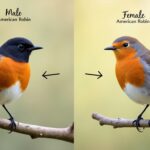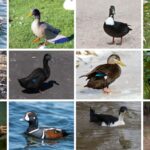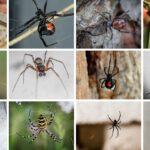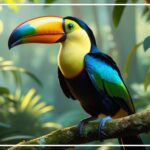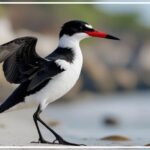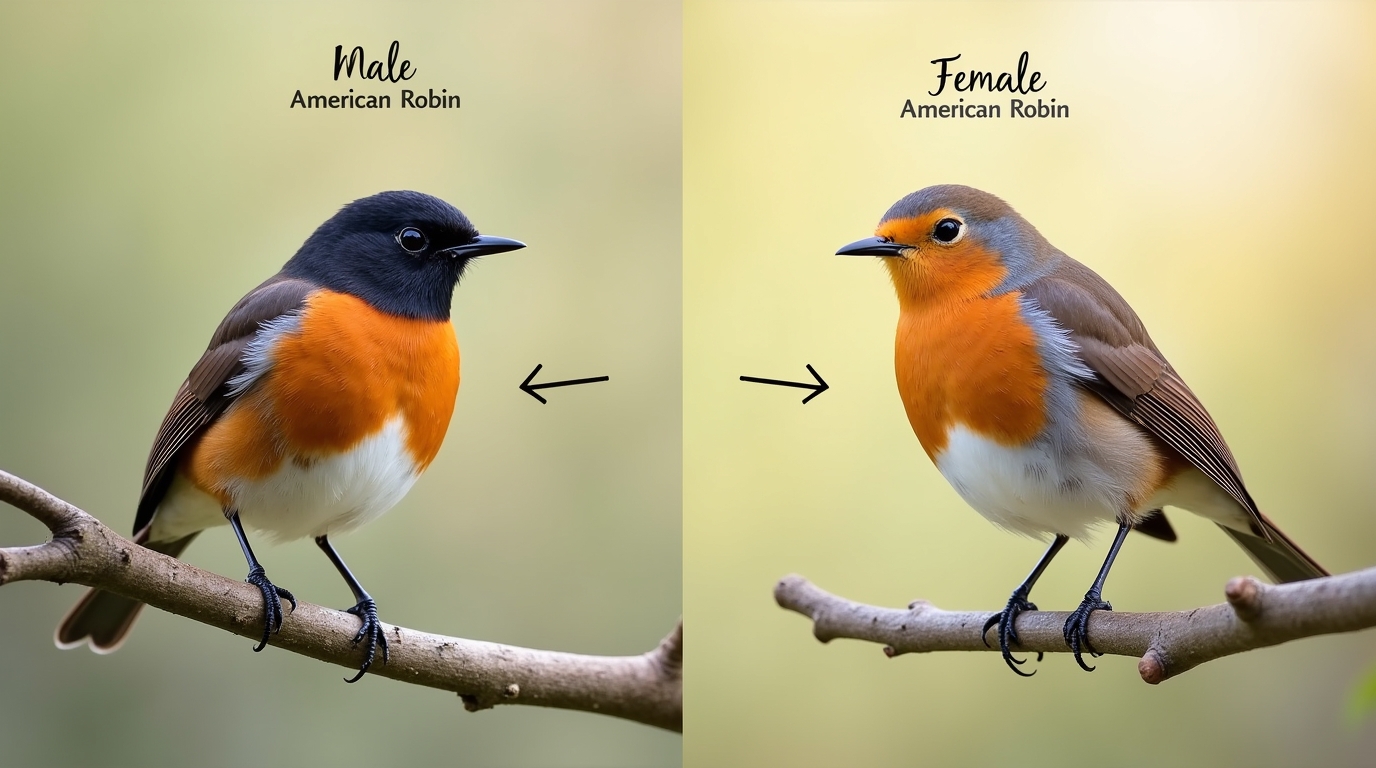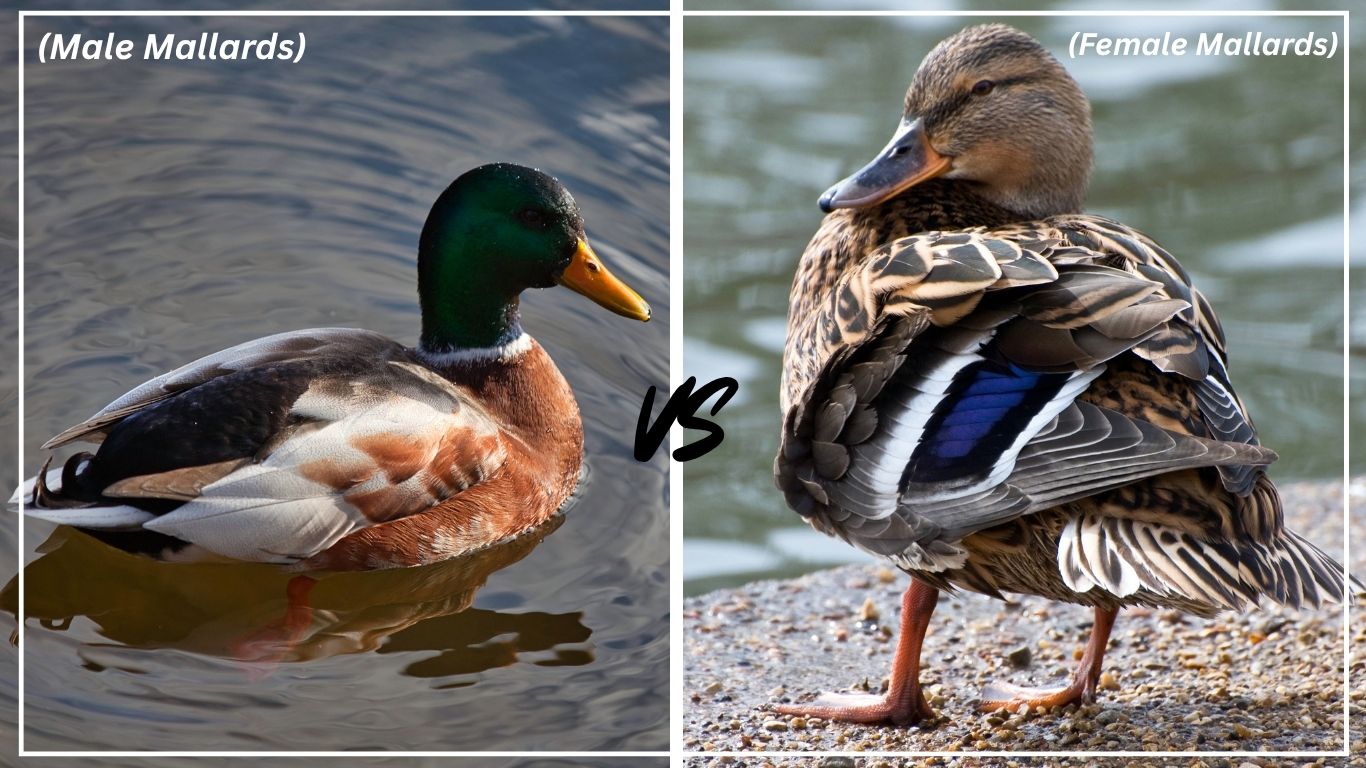Some birds don’t just have a splash of blue—they’re covered in it. From tropical rainforests to mountain slopes and backyard feeders, these birds wear shades of sky, sapphire, cobalt, and turquoise as their primary color. This list highlights 23 dazzling bird species that are completely or predominantly blue, each with its own unique beauty, habitat, and behaviors. Whether you’re a birder or simply love colorful wildlife, these blue-feathered beauties are sure to impress.
1. Indigo Bunting
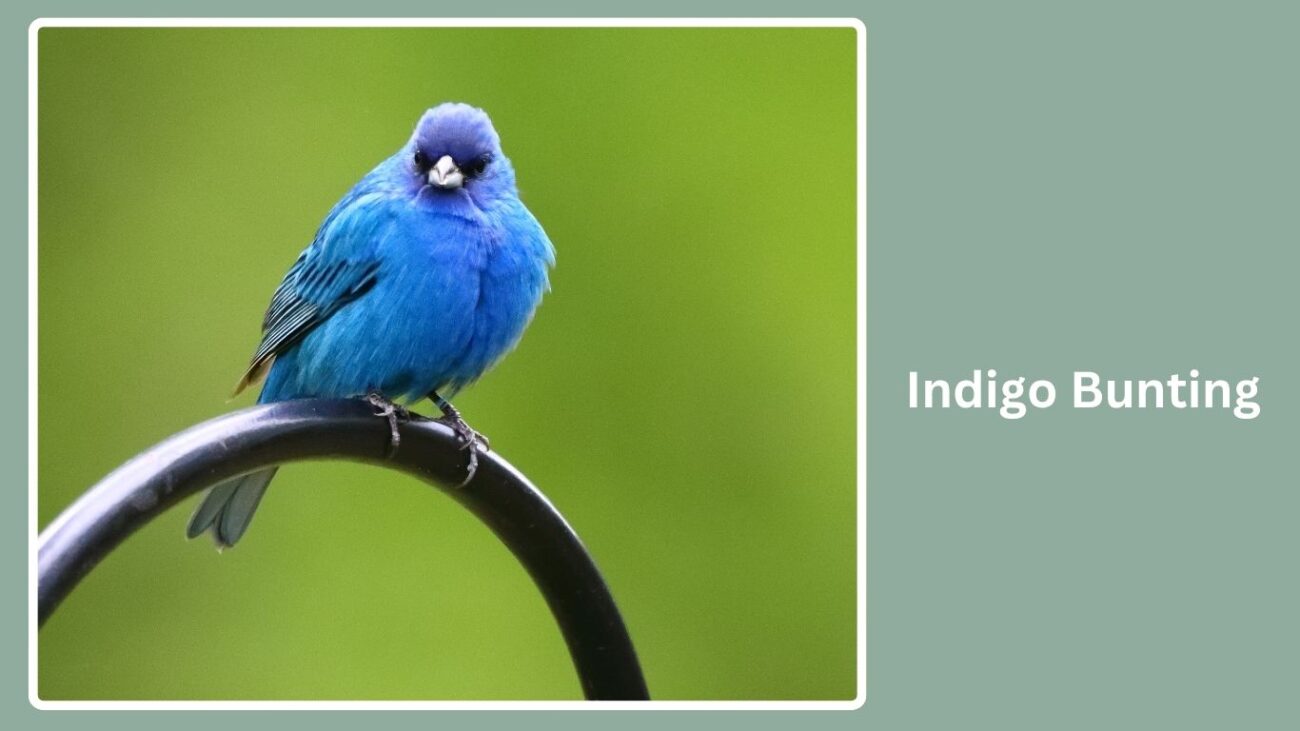
The Indigo Bunting is a small songbird widely admired for its striking, all-blue plumage. During breeding season, the male’s vibrant blue feathers make it one of the most eye-catching birds in North America. Its cheerful song and preference for open, sunny areas make it a favorite among birdwatchers.
Identification
- Small, sparrow-sized bird (about 5 inches long)
- Short, conical bill ideal for seed eating
- Males are entirely bright blue in summer; females are brown
- Wings may have slightly darker tones in some lighting
Color and Appearance
The breeding male Indigo Bunting is completely covered in rich, iridescent blue feathers, appearing almost glowing in sunlight. Outside the breeding season, males molt into a duller brown plumage, more similar to females. Their plumage appears brighter blue the more direct light hits it, thanks to the way their feathers scatter light rather than using blue pigment.
Habitat and Behaviors
Indigo Buntings prefer brushy fields, forest edges, and roadsides—especially areas with dense, shrubby vegetation. They migrate at night using the stars for navigation, traveling from North America to Central and South America. Males sing from high perches to mark their territory and attract mates, often heard before they are seen. They feed mostly on seeds, berries, and insects, and can frequently be spotted at backyard feeders in summer.
2. Mountain Bluebird
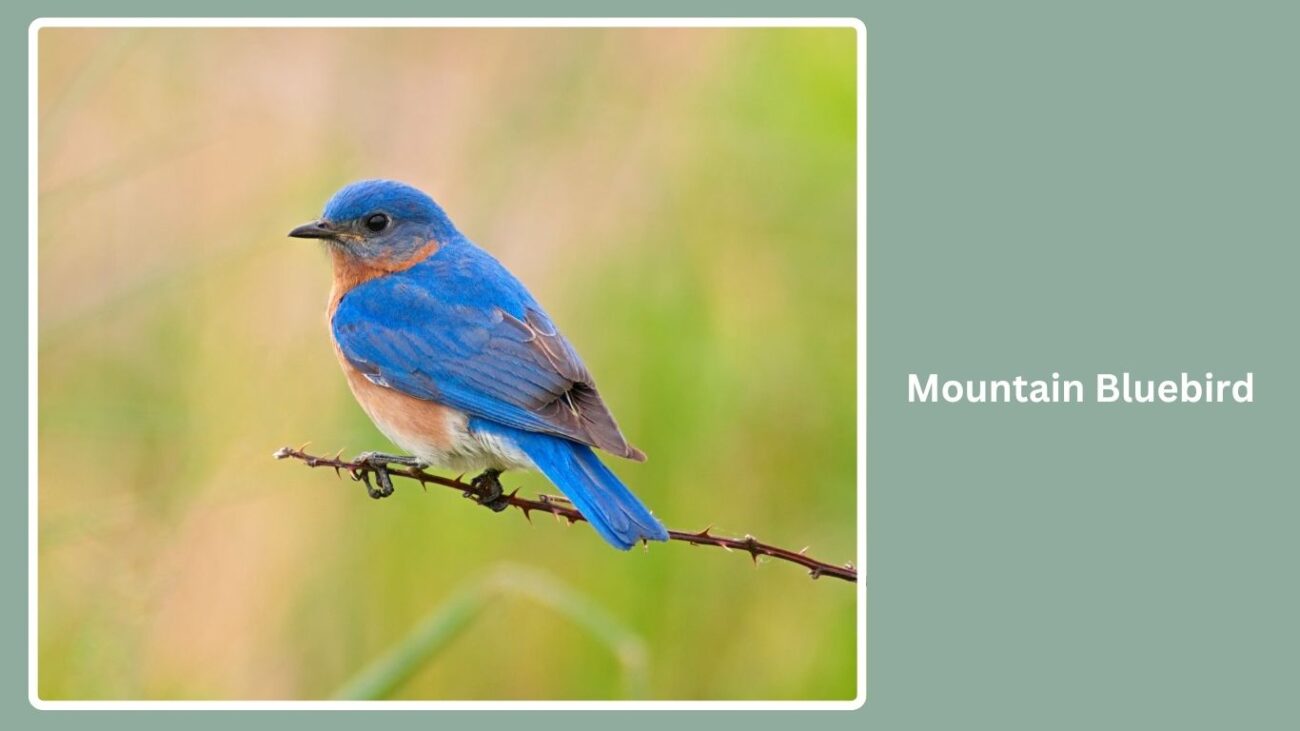
The Mountain Bluebird is a dazzling sky-blue bird found throughout open country in western North America. Males are especially vivid during breeding season, with feathers that seem to mirror the clear blue skies of their mountainous habitats. Graceful and active, these birds are a joy to watch as they hover over fields in search of insects.
Identification
- Medium-sized thrush, around 7 inches long
- Males are entirely bright sky blue, slightly lighter underneath
- Females are mostly gray-brown with bluish wings and tail
- Slim body with long wings and thin bill
Color and Appearance
Breeding males are an intense turquoise-blue all over, including the back, wings, and belly. Their color may appear lighter or richer depending on lighting. Females, while not completely blue, may show touches of pale blue on their wings and tail. Males maintain their soft blue hue year-round, though slightly duller in winter.
Habitat and Behaviors
Mountain Bluebirds prefer open landscapes like grasslands, meadows, and alpine valleys. They nest in tree cavities or nest boxes and are often seen perching on fence posts or hovering while hunting insects. During migration and winter, they may form small flocks. Their gentle song and vibrant color make them a symbol of spring in many mountain regions.
3. Eastern Bluebird
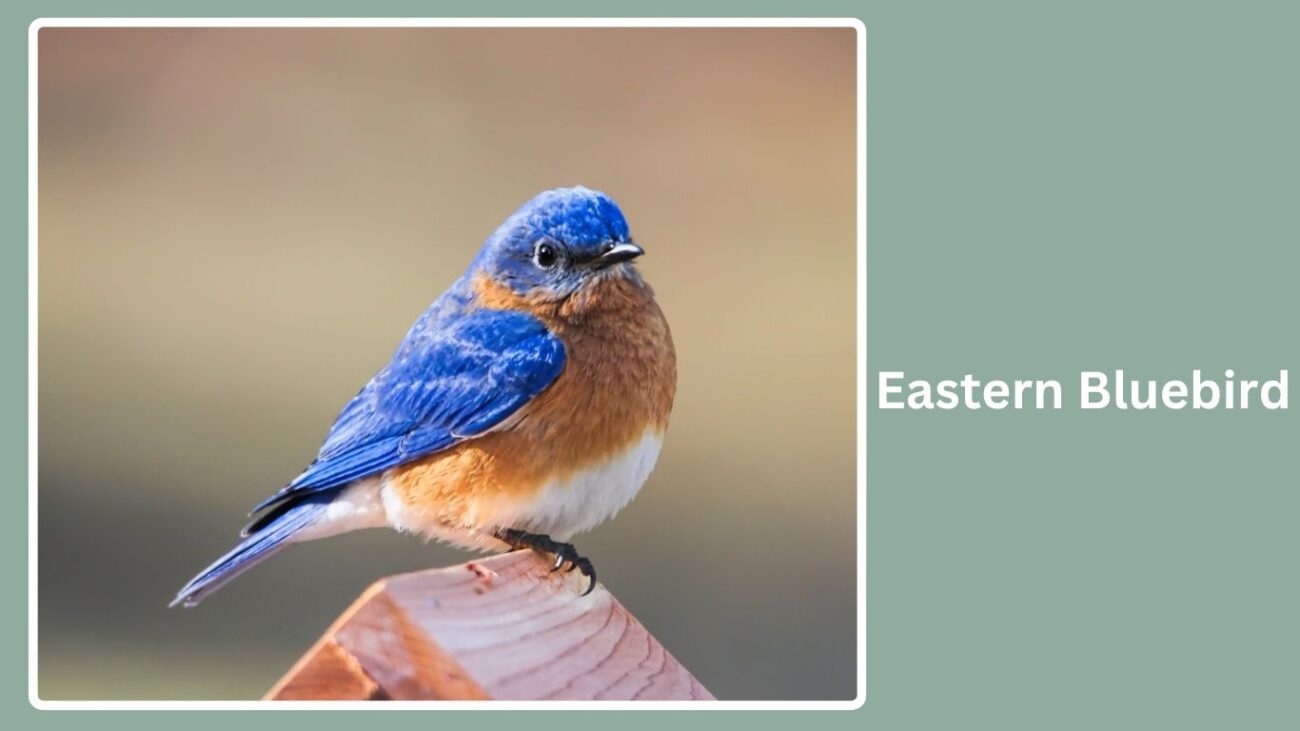
The Eastern Bluebird is a charming and widely beloved bird known for its vivid blue upperparts and warm red chest. While not fully blue like the Mountain Bluebird, males still display strikingly rich blue across the head, back, wings, and tail, making them one of the most colorful backyard visitors in the eastern U.S.
Identification
- Small thrush, about 6.5 inches long
- Males: bright royal blue above, reddish-orange chest, white belly
- Females: paler blue with gray and tan tones
- Straight posture and musical voice
Color and Appearance
Male Eastern Bluebirds are predominantly covered in royal blue from the crown to the tail. Though the breast is rust-colored, the overall appearance is vivid due to the brilliance of their blue feathers. Females are more subdued in tone but still show touches of soft blue on wings and tail.
Habitat and Behaviors
Eastern Bluebirds prefer open woodlands, orchards, farmlands, and suburban areas with scattered trees and low grass. They often use nest boxes and are highly cavity-nesting. Bluebirds are known for their sweet warbling songs and active hunting of insects from low perches. In colder months, they may shift to berries and form loose flocks.
4. Western Bluebird
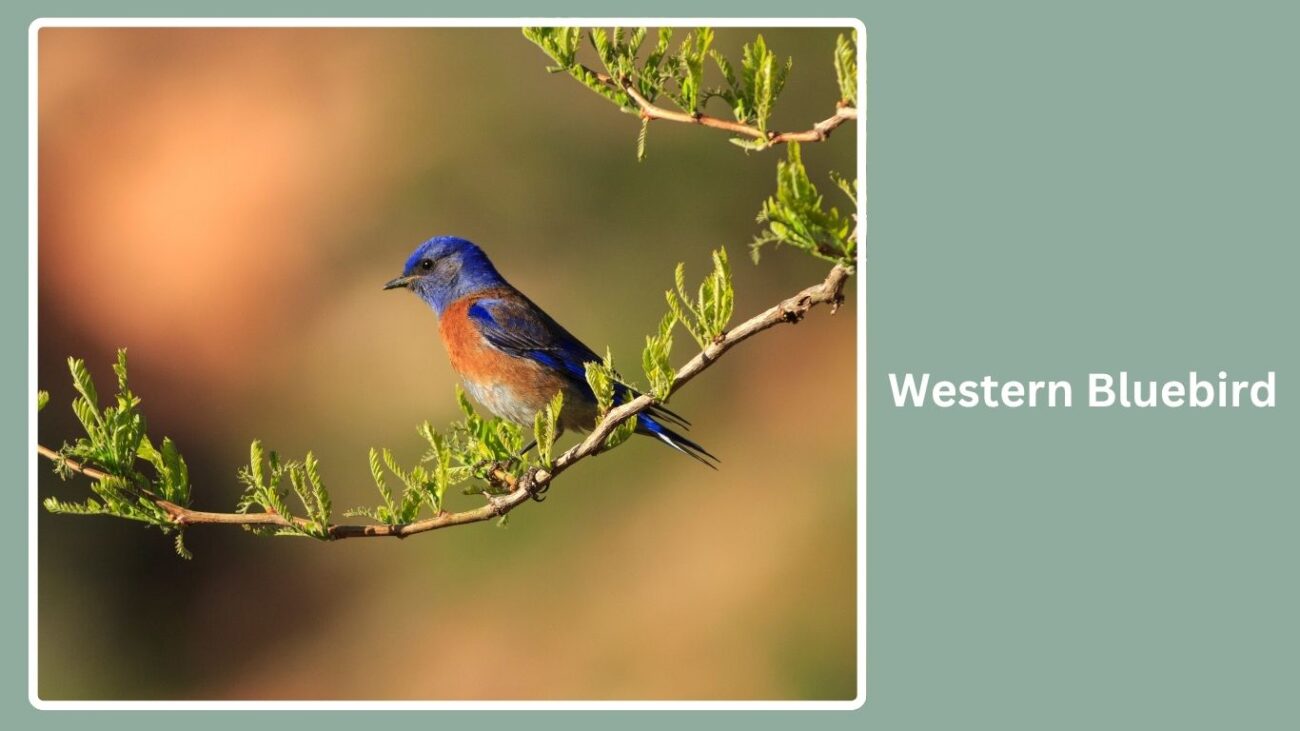
The Western Bluebird is a vibrant and cheerful songbird found in open woodlands and meadows across the western United States. With its bright blue plumage and gentle nature, it’s a favorite among birdwatchers and backyard bird lovers alike.
Identification
- Small thrush, about 6.5 to 7 inches long
- Males: deep blue on head, back, wings, and tail with a rusty-red chest
- Females: grayish overall with pale blue on wings and tail
- Compact body with a thin, straight bill
Color and Appearance
Male Western Bluebirds have deep, vivid blue plumage covering most of their bodies, including the head, back, and wings. While the chest is rusty orange, their rich blue tones dominate their appearance. Females show muted coloration with bluish hints, especially on the wings.
Habitat and Behaviors
They inhabit open forests, oak savannas, and farmlands. These bluebirds are cavity nesters, often using natural holes or nest boxes. They perch low to catch insects or forage on the ground for berries and seeds. Their soft warbles and gentle chirps make them easy to spot if you listen carefully in quiet, open areas.
5. Blue Grosbeak
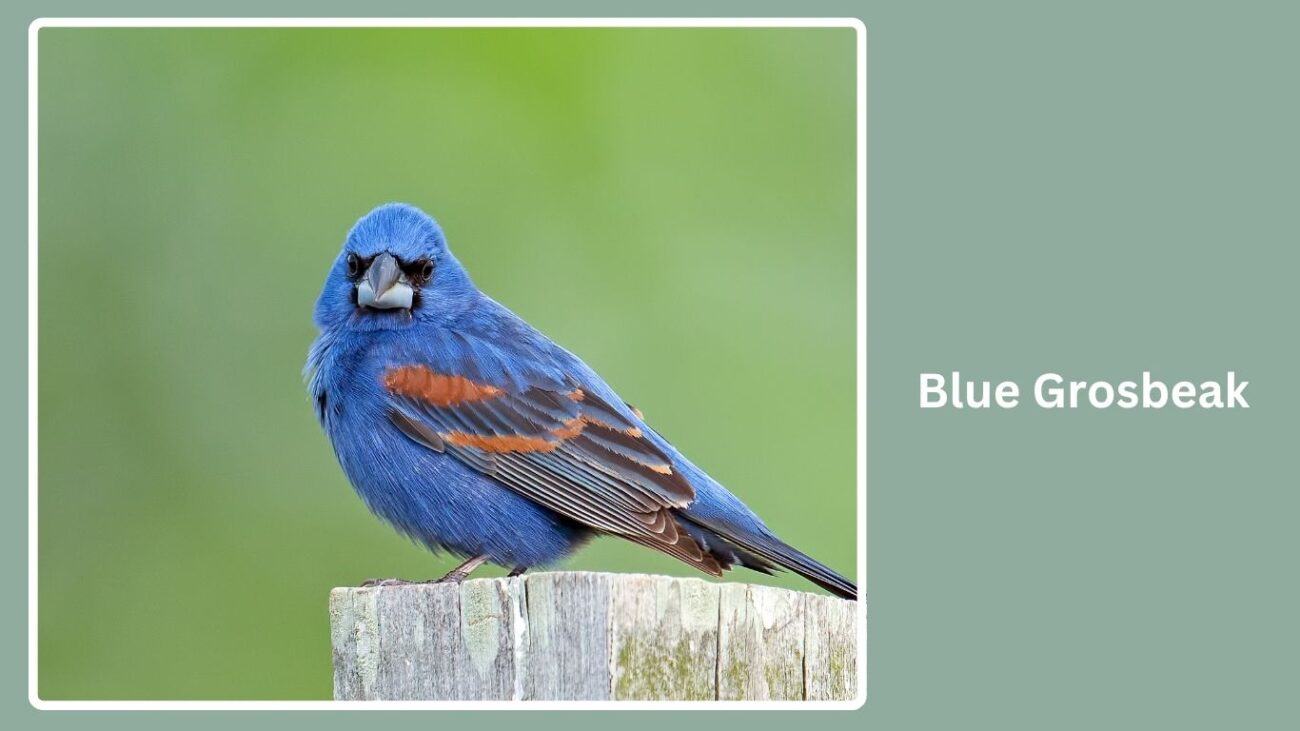
The Blue Grosbeak is a striking and somewhat secretive songbird known for its deep, rich blue plumage and thick silver bill. Though less commonly seen than other bluebirds, they are widespread in shrubby and weedy habitats across the southern United States.
Identification
- Medium-sized songbird, around 6.5 to 7.5 inches long
- Males: entirely deep cobalt blue with chestnut wing bars
- Females: warm brown with blue hints on the wings and tail
- Thick, conical bill and a slightly stocky build
Color and Appearance
Male Blue Grosbeaks are richly colored in dark, velvety blue from head to tail. Their unique chestnut wing bars contrast beautifully against their body. In the right light, their feathers can appear almost metallic. Females have a much subtler blue tone, mostly on the wings.
Habitat and Behaviors
Blue Grosbeaks prefer brushy roadsides, overgrown fields, and forest edges. They’re often found singing from hidden perches or low shrubs. Though they can be shy, males sing long, melodious songs throughout the breeding season. Their diet includes insects, seeds, and small fruits.
6. Blue Jay

The Blue Jay is a bold and intelligent bird recognized for its striking blue feathers and loud, expressive calls. Found throughout eastern and central North America, it’s one of the most familiar—and vocal—backyard birds.
Identification
- Medium-sized bird, about 9 to 12 inches long
- Bright blue back, crest, wings, and tail
- White face and underparts with a black necklace
- Strong bill and expressive crest
Color and Appearance
Blue Jays are not truly pigmented blue—their feathers scatter light to appear blue, a structural coloration effect. Their body is vivid blue with black barring on the wings and tail, and a white underside. The crest on their head rises or flattens with mood, adding personality to their already flashy look.
Habitat and Behaviors
They live in forests, suburban areas, parks, and anywhere with trees. Known for their mimicry skills and loud calls, Blue Jays often imitate hawks. They’re also excellent at caching food like acorns and peanuts for later use. Highly social and curious, they can be seen traveling in noisy family groups, especially in fall and winter.
7. Tree Swallow
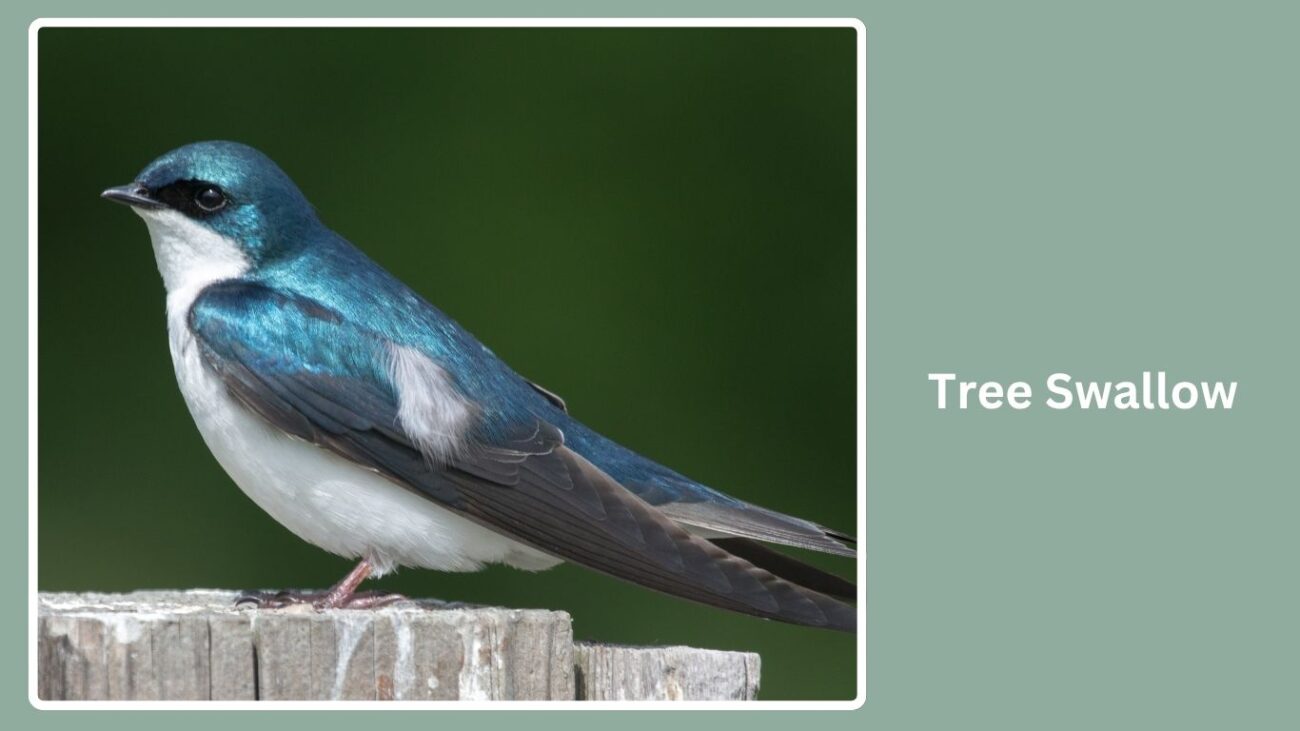
The Tree Swallow is a sleek, agile flier known for its iridescent blue upperparts and graceful aerial movements. These birds are common near water bodies and open fields across North America.
Identification
- Small songbird, about 5 to 6 inches long
- Shiny blue-green back and head
- White throat, belly, and underparts
- Pointed wings and slightly forked tail
Color and Appearance
Breeding males have a glossy, metallic blue that can appear turquoise or teal depending on the light. Their white underside creates a sharp contrast with their shimmering upper body. Females and juveniles are duller, often showing a mix of brown and blue.
Habitat and Behaviors
Tree Swallows nest near wetlands, lakes, and open fields, often in nest boxes or tree cavities. They are aerial insectivores, catching flying insects with swift, acrobatic moves. During migration, they form large flocks and are often seen swooping low over water or fields. Their gentle chirping calls and shimmering plumage make them a delight to observe.
8. Purple Martin (Male)
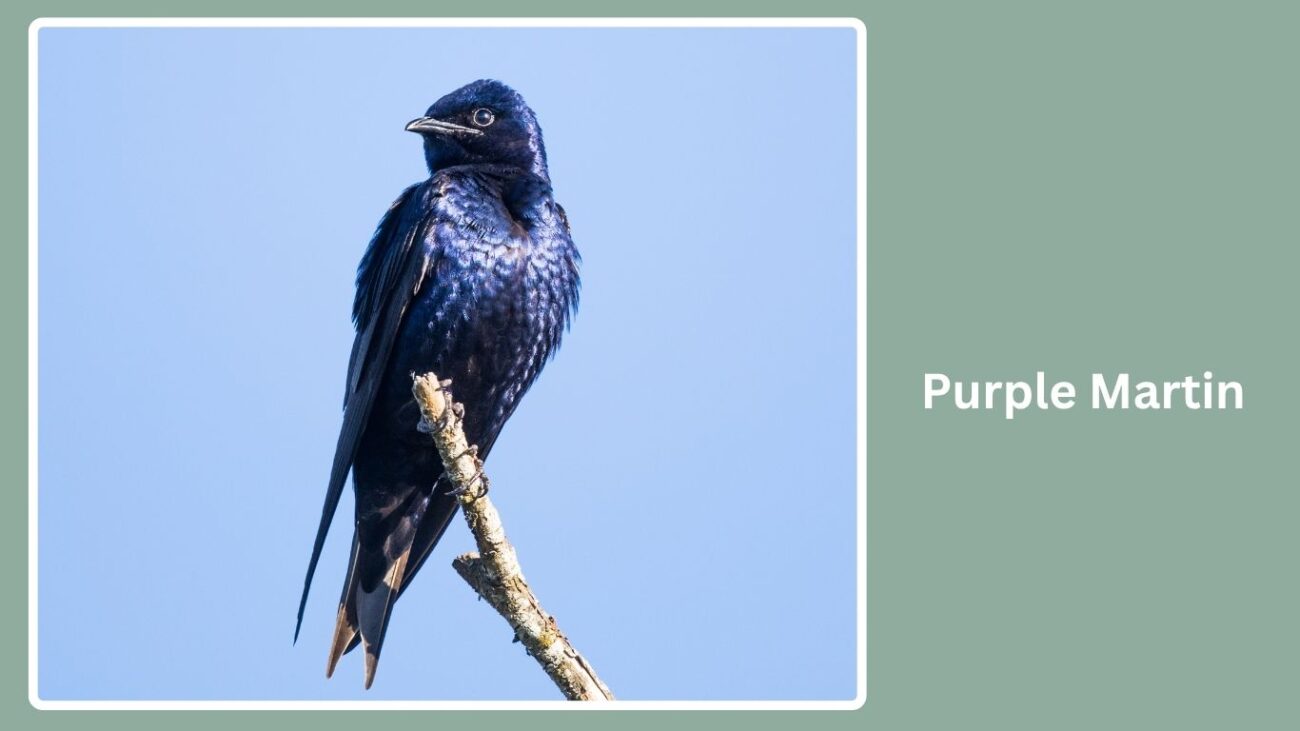
The male Purple Martin is a glossy, dark blue-black bird admired for its graceful flight and communal nesting habits. Although called “purple,” the male’s feathers shimmer with an iridescent blue sheen in direct sunlight, making them appear richly blue to the eye.
Identification
- Large swallow, about 7.5 to 8 inches long
- Adult males: entirely glossy blue-black
- Females and juveniles: lighter, with pale underparts and duller blue
- Long, pointed wings and slightly forked tail
Color and Appearance
Breeding males have a uniform sheen of deep blue that can appear purplish in shade but bright blue in sunlight. The glossiness of their feathers makes them sparkle in flight. Their appearance is smooth and sleek, with a balanced, aerodynamic body.
Habitat and Behaviors
Purple Martins nest in colonies, often in man-made birdhouses or gourds in open areas near water. They feed almost exclusively on flying insects, darting through the sky with agile precision. Highly social, they return to the same nesting sites each year and often form large roosts during migration.
9. Blue Dacnis (Male)

The Blue Dacnis, also known as the Turquoise Honeycreeper, is a small tropical bird found in Central and South America. The male is a vivid electric blue, making it one of the most colorful birds of the rainforest canopy.
Identification
- Small tanager-like bird, about 5 inches long
- Males: bright turquoise-blue with black mask and wings
- Females: mostly green with blue tinges on the head
- Slim build with a thin, pointed bill
Color and Appearance
Male Blue Dacnis have glowing, sky-blue plumage across most of their body, contrasted by black on the wings, back, and around the eyes. Their feathers appear almost neon in natural light. Females lack the blue brilliance but are still eye-catching in green.
Habitat and Behaviors
They inhabit tropical rainforests, forest edges, and plantations, often foraging in pairs or small flocks. Blue Dacnis feed on fruits, nectar, and insects, often seen hopping through the canopy. Their quiet calls and quick movements make them a treat for birdwatchers with a sharp eye.
10. Blue Whistling Thrush

The Blue Whistling Thrush is a bold, robust bird native to the mountains and foothills of Asia. It’s well known for its deep blue plumage and loud, melodious whistling calls that echo through forested valleys.
Identification
- Large thrush, about 13 inches long
- Entirely deep purplish-blue body with faint speckling
- Yellow or black bill depending on the regional subspecies
- Long tail and strong legs
Color and Appearance
This bird appears almost entirely cobalt to purplish-blue, with tiny white speckles on the shoulders and crown. In bright sunlight, the blue shimmers with metallic tones, giving the bird a bold and glossy look. Both males and females look similar.
Habitat and Behaviors
Blue Whistling Thrushes are found near mountain streams, wet forests, and rocky terrains across the Himalayas, China, Southeast Asia, and Indonesia. They are ground feeders, often seen hopping on rocks while foraging for insects, snails, and small creatures. Their rich, flute-like whistles make them easy to identify even before they’re seen.
11. Spangled Cotinga
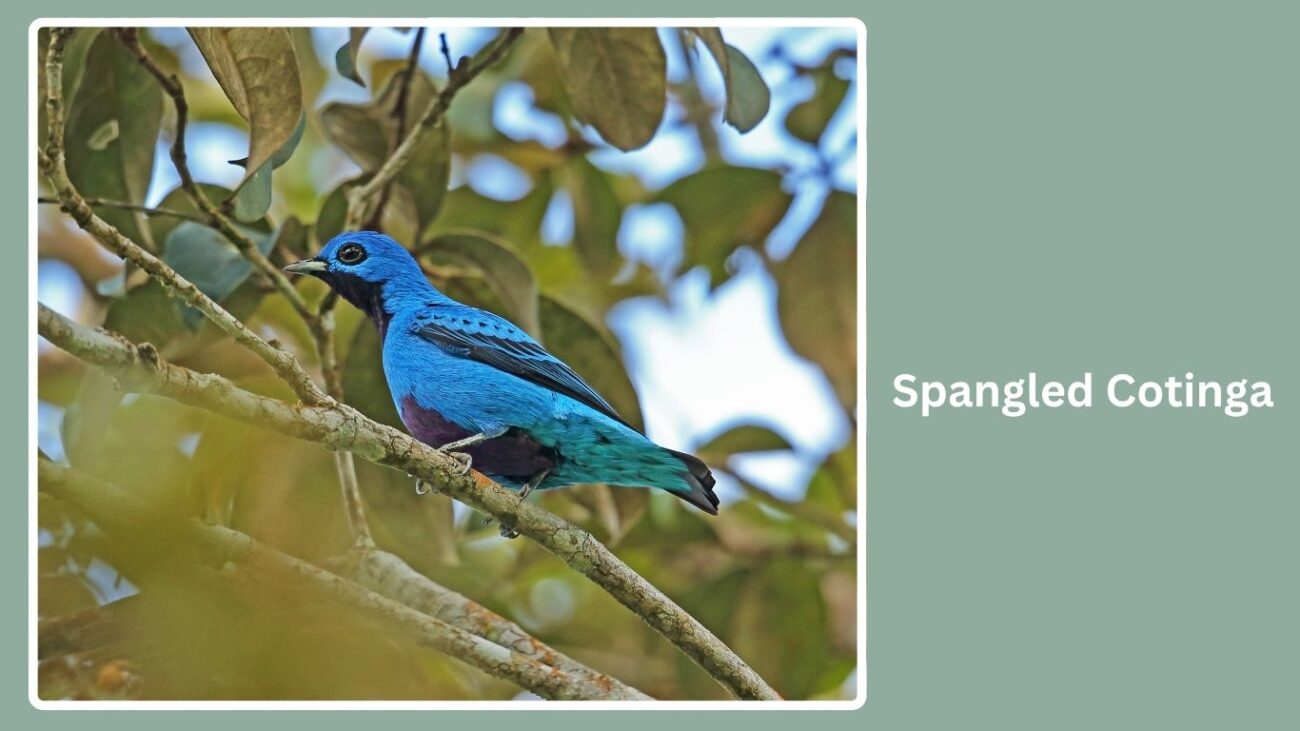
The Spangled Cotinga is a brilliantly colored bird found in the Amazon rainforest. Males are an intense sky-blue with black wings, making them among the most strikingly blue birds in the world.
Identification
- Medium-sized tropical bird, about 7 to 8 inches long
- Males: bright, electric blue body with black throat and wings
- Females: gray-brown with faint streaks
- Short, broad bill and rounded body
Color and Appearance
The male’s plumage is bright turquoise blue with a shiny, “spangled” effect that glows in sunlight. The contrast with the dark wings and throat makes the color even more vibrant. Females are much plainer in appearance.
Habitat and Behaviors
Spangled Cotingas live in the canopy of the Amazon and other tropical forests in South America. They feed on fruit and are most often seen perching silently on high branches. Despite their vivid color, they can be hard to spot because of their quiet nature and high location in the treetops.
12. Blue Rock Thrush
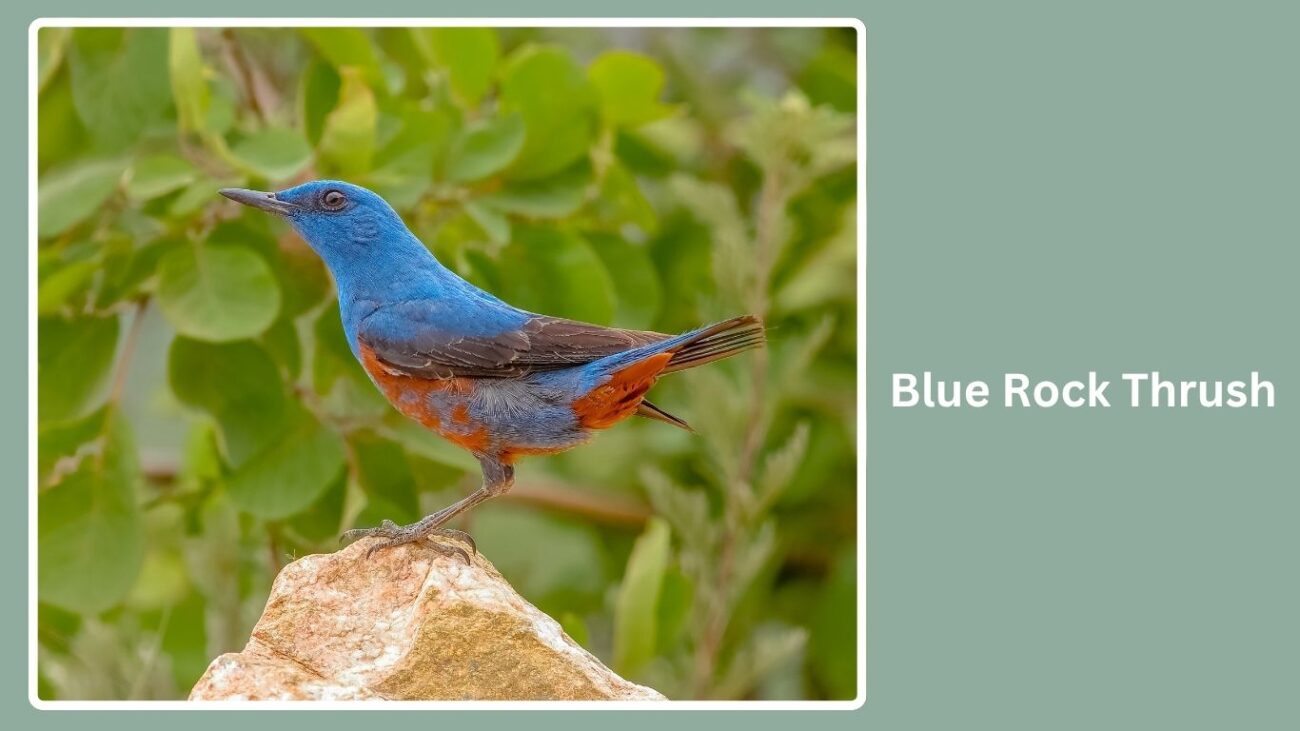
The Blue Rock Thrush is a solitary, elegant bird found across Europe, Asia, and North Africa. With its rich blue tones and preference for rocky habitats, it often appears like a splash of sky against the earth-toned cliffs and ruins where it perches.
Identification
- Medium-sized thrush, about 8 to 9 inches long
- Males: uniform deep blue from head to tail
- Females: gray-brown with faint scaling
- Slender body with a slightly curved bill
Color and Appearance
Adult males display a smooth, dark blue plumage throughout the body, with a slightly purplish or slate-blue tinge in some light. Their feathers have a matte finish, lacking iridescence, but are still vivid and striking against rocky backgrounds. Females are more muted with speckled brown-gray plumage.
Habitat and Behaviors
Blue Rock Thrushes are found in mountainous areas, coastal cliffs, old buildings, and rocky hillsides. They are ground-feeding insectivores that often perch conspicuously before diving to catch prey. Their song is melodic and flute-like, commonly heard during early mornings and late afternoons in spring.
13. Hyacinth Macaw

The Hyacinth Macaw is the largest flying parrot in the world and one of the most spectacularly blue birds found in nature. Native to South America, it is a symbol of the tropical wild and a favorite among parrot lovers due to its vibrant plumage and affectionate nature.
Identification
- Very large parrot, about 39 inches long
- Entire body is cobalt blue
- Bare yellow skin around the eyes and beak
- Massive black beak designed for cracking nuts
Color and Appearance
The Hyacinth Macaw is entirely covered in rich, royal blue feathers with no variation across the body. Its large size and glowing blue plumage make it unmistakable. The contrast with its yellow facial markings further emphasizes the intensity of its color.
Habitat and Behaviors
These parrots inhabit palm swamps, woodlands, and open grasslands in Brazil, Bolivia, and Paraguay. Highly intelligent and social, they often form strong pair bonds and communicate with a variety of loud calls. Their diet includes hard nuts and fruits, particularly from palm trees. Due to habitat loss and illegal pet trade, they are considered vulnerable in the wild.
14. Blue-and-white Swallow

The Blue-and-white Swallow is a graceful, fast-flying bird found throughout Central and South America. Though small, its crisp contrast of deep blue and clean white makes it a visually striking presence in the sky.
Identification
- Small swallow, about 4.5 to 5 inches long
- Males: glossy deep blue back, crown, and wings with white underparts
- Females similar but slightly duller
- Short, forked tail and pointed wings
Color and Appearance
The male’s back, head, and wings are a shiny dark blue, while the throat, belly, and vent are pure white. This high contrast creates a clean, sleek appearance in flight. Although not fully blue underneath, their rich upper plumage gives a dominant blue impression during gliding and perching.
Habitat and Behaviors
These swallows inhabit open woodlands, fields, and near bodies of water. They often nest in cavities or building crevices and forage in open air for flying insects. Highly agile, they are commonly seen swooping and darting over meadows and lakes. They migrate seasonally across large parts of South America.
15. Asian Fairy-bluebird (Male)
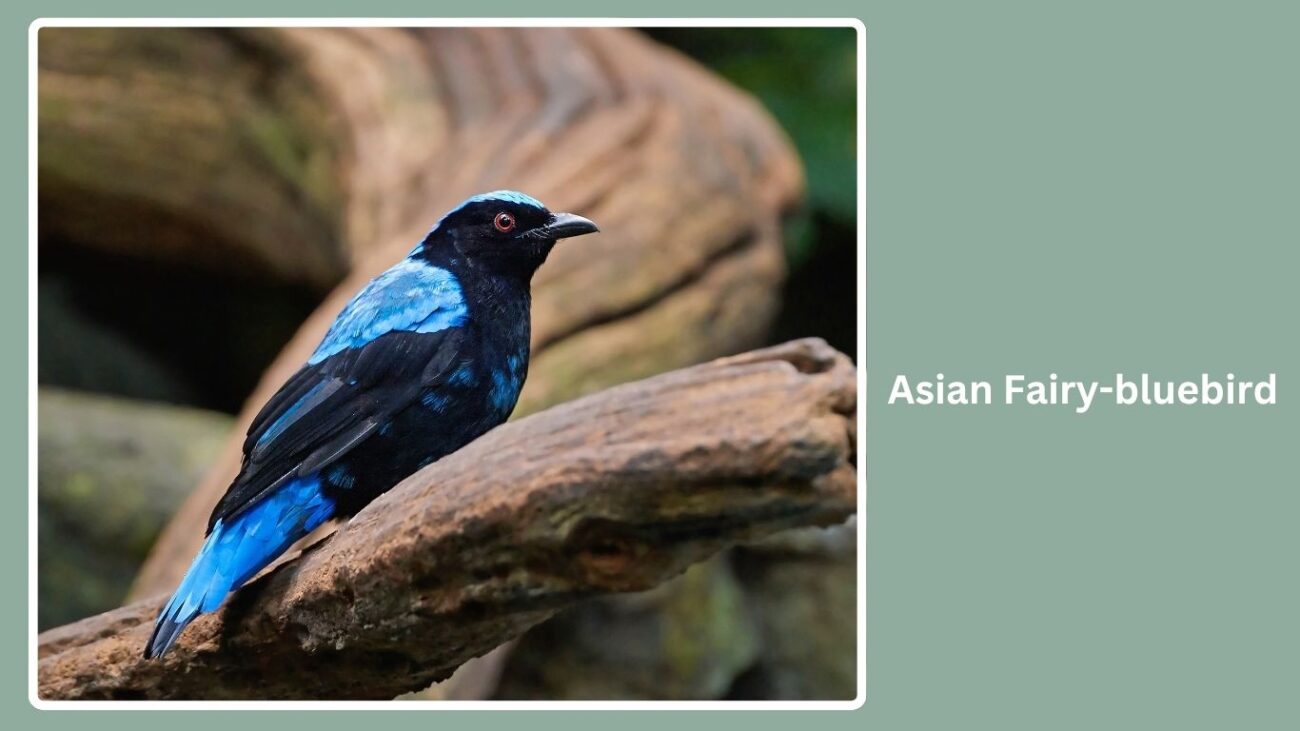
The male Asian Fairy-bluebird is a deep, iridescent blue gem of the tropical forests in South and Southeast Asia. With glowing feathers and a calm presence, this bird is often spotted quietly foraging in fruiting trees.
Identification
- Medium-sized songbird, around 10 inches long
- Males: shimmering royal blue upperparts and deep black underparts and face
- Females: entirely turquoise-green
- Strong, curved bill and red eyes
Color and Appearance
The male displays a brilliant electric-blue crown, back, wings, and tail. The face, throat, and underparts are contrastingly black, creating a dramatic look. In sunlight, the feathers shimmer with a metallic quality that enhances their bold color.
Habitat and Behaviors
Asian Fairy-bluebirds live in tropical evergreen and moist deciduous forests. They are mostly frugivorous, feeding on berries and small fruits, though they also eat insects. These birds are shy and usually forage alone or in pairs high in the canopy, making them a prized sighting for birdwatchers.
16. Blue-capped Rock Thrush

The Blue-capped Rock Thrush is a vibrant and eye-catching bird found in the hilly forests and wooded ravines of South and Southeast Asia. With its bright blue head and upperparts, it stands out vividly among the greenery during the breeding season.
Identification
- Medium-sized thrush, about 7 inches long
- Males: deep blue crown, back, and throat; bright chestnut belly and sides
- Females: duller brown with faint mottling
- Strong body with upright posture
Color and Appearance
Breeding males show a bold blue cap and back, with the rest of the upperparts in varying shades of blue. While the underparts are chestnut, the dominant visual impression from above or a perched position is rich blue. The contrast creates a striking and memorable look in forested habitats.
Habitat and Behaviors
These thrushes favor wooded hillsides, rocky clearings, and forest edges. They’re often seen on the ground or perched on low branches, flicking their tails and scanning for insects. During winter, they migrate to lowland forests and scrub. Their sweet, fluting song adds to their charm, especially during the early morning hours.
17. Blue-backed Manakin

The Blue-backed Manakin is a tiny, energetic bird found in the lowland forests of Central and South America. It’s known not just for its vivid color but also for its extraordinary courtship dances performed by males to impress females.
Identification
- Small bird, about 3.5 to 4 inches long
- Males: brilliant blue back, black body, and red crown
- Females: plain olive-green overall
- Compact, rounded body with a short tail
Color and Appearance
The male’s back glows with intense sky-blue feathers, sharply contrasting against its black wings and underparts. Though small, its vibrant colors and quick movements make it noticeable when active. Females are much duller, adapted to nesting and camouflage.
Habitat and Behaviors
They inhabit tropical lowland forests, usually in dense, humid regions. Males gather in leks—traditional display areas—where they perform elaborate dances and flipping motions to attract mates. Blue-backed Manakins feed on fruit and small insects, often foraging quietly in the mid-canopy when not displaying.
18. Blue Vanga
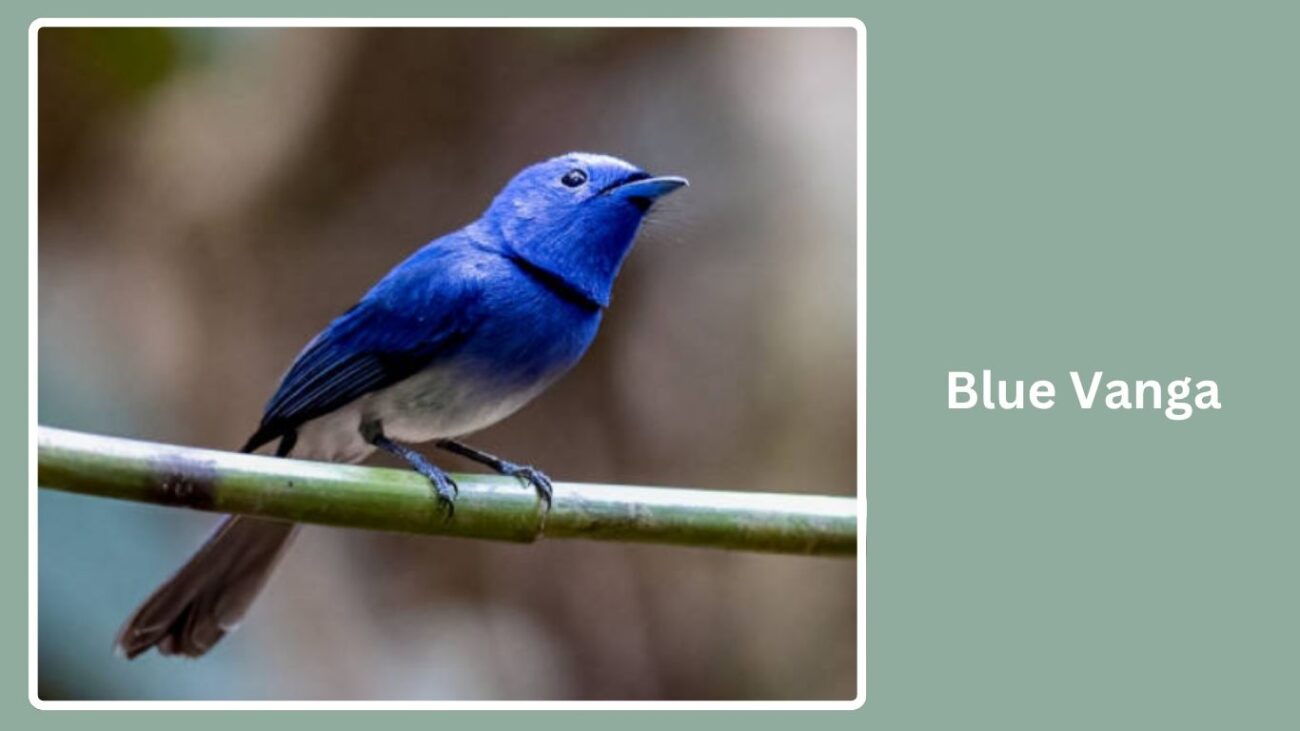
The Blue Vanga is a visually stunning bird native to Madagascar, known for its smooth blue plumage and strong, hooked bill. It belongs to the unique vanga family—birds that evolved only on the island—making it a special sight for bird enthusiasts.
Identification
- Medium-sized bird, about 6 to 7 inches long
- Males and females look alike: sky-blue upperparts and white underparts
- Large, strong, slightly hooked pale blue bill
- Rounded body and short tail
Color and Appearance
The Blue Vanga has vivid blue feathers covering its head, back, wings, and tail, with pure white underparts. The contrast gives it a clean, sharp appearance. The large pale blue bill stands out against its face and adds to its striking look.
Habitat and Behaviors
This species lives in humid forests and wooded areas across Madagascar. It forages actively in the mid to upper canopy, feeding on insects and small invertebrates. Often seen in pairs or mixed flocks, Blue Vangas move quickly through branches with agile hops and brief flights. They are alert, vocal, and always on the move.
19. Verditer Flycatcher
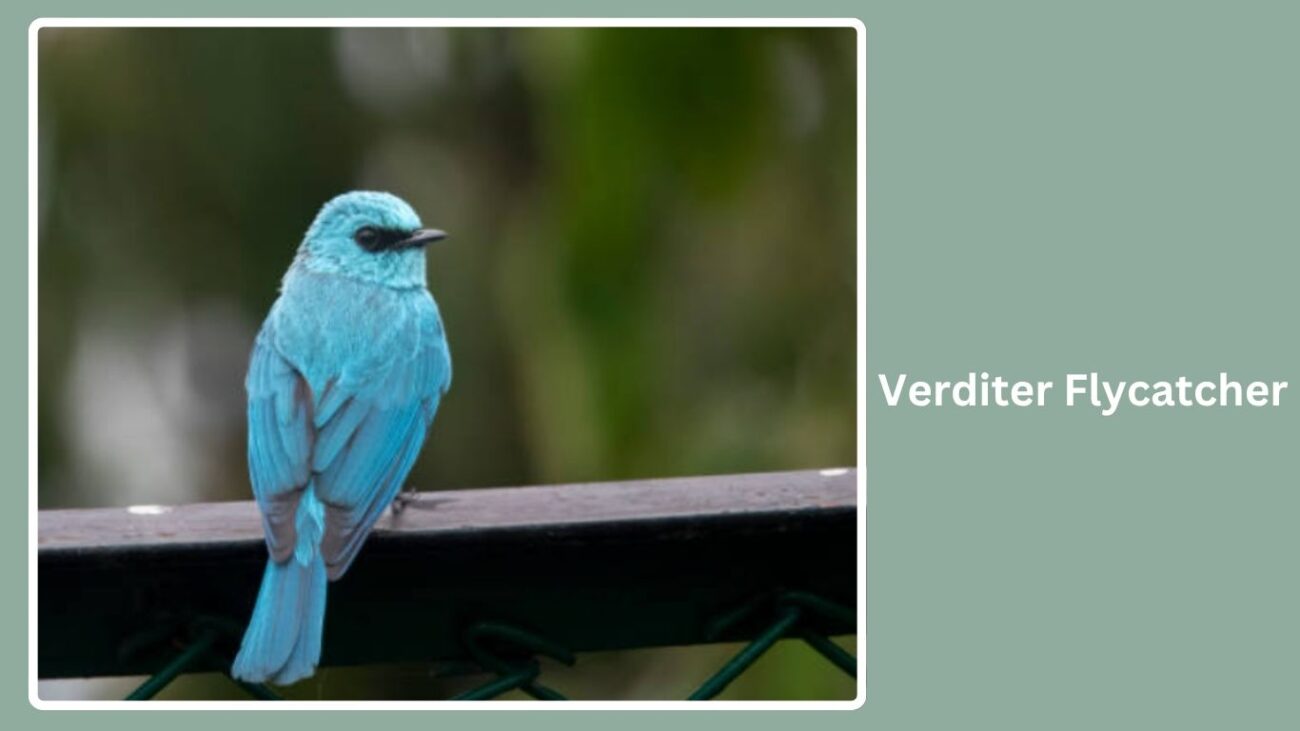
The Verditer Flycatcher is a glowing blue bird of South and Southeast Asia, often seen perched alone on wires or bare branches in forested regions. It gets its name from its rare and vivid verditer (copper sulfate-like) blue color.
Identification
- Small passerine bird, about 6.5 inches long
- Males: entirely bluish-turquoise with a black patch around the eyes
- Females: slightly duller blue but still quite colorful
- Slender body with upright posture
Color and Appearance
Both males and females are largely blue, but the male’s feathers are particularly rich and velvety, appearing almost electric in sunlight. From head to tail, their body glows in shades of teal and sky-blue, with a bold black lores (area between beak and eye) adding definition to the face.
Habitat and Behaviors
Verditer Flycatchers prefer forest edges, gardens, and wooded hills. They feed mainly on flying insects, often swooping out from open perches in classic flycatcher style. Solitary and calm, they’re often seen quietly surveying their surroundings from an exposed spot, making them easy to spot despite their delicate movements.
20. White-tailed Blue Robin
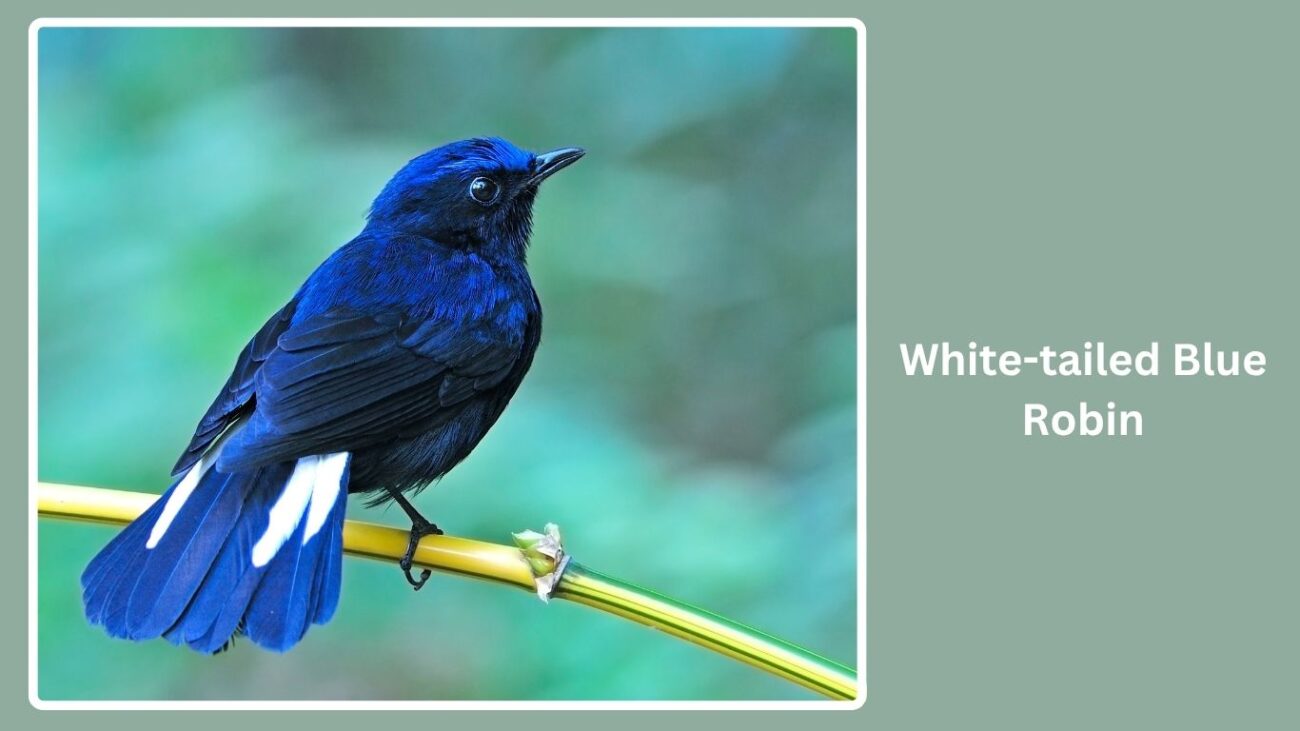
The White-tailed Blue Robin is a secretive, forest-dwelling bird found in parts of the Himalayas and Southeast Asia. Known for its deep indigo-blue plumage, the male stands out against the dim undergrowth where it typically forages.
Identification
- Medium-sized thrush-like bird, about 7.5 inches long
- Males: dark blue overall with white patches on the outer tail
- Females: brownish overall with no blue
- Slender build with upright posture and long legs
Color and Appearance
The male’s plumage is a rich navy or violet-blue, covering the entire head, back, and underparts. Its most noticeable field mark is the flash of white in the outer tail feathers, which appears when it flicks its tail during movement. Females lack blue and are more cryptic in coloration.
Habitat and Behaviors
White-tailed Blue Robins inhabit dense, shaded undergrowth in moist forests and bamboo thickets, usually at higher elevations. They feed on insects and small fruits, often hopping along the forest floor. Their elusive nature and soft calls make them difficult to spot, but when seen, their glowing blue plumage is unforgettable.
21. Blue Waxbill

The Blue Waxbill is a tiny, delicate finch native to sub-Saharan Africa. With powder-blue feathers and soft chirping calls, it’s a common but beautiful species often found near water and grasslands.
Identification
- Small finch, about 4.5 inches long
- Males: pale blue face, throat, chest, and flanks with a brown back
- Females: duller blue with more grayish-brown tones
- Short, conical bill and rounded wings
Color and Appearance
Males have extensive pale to medium blue plumage across the face, chest, and underparts. While their back is brownish, their soft blue coloring dominates their appearance, especially in good lighting. The feathers have a pastel, powdery quality rather than a glossy finish.
Habitat and Behaviors
Blue Waxbills are found in savannas, open woodland, and gardens. They often forage in pairs or small groups, feeding on grass seeds and small insects. They’re frequent visitors to water sources and bird feeders, and their sweet, high-pitched calls are a common background sound in many African landscapes.
22. Splendid Fairywren (Breeding Male)
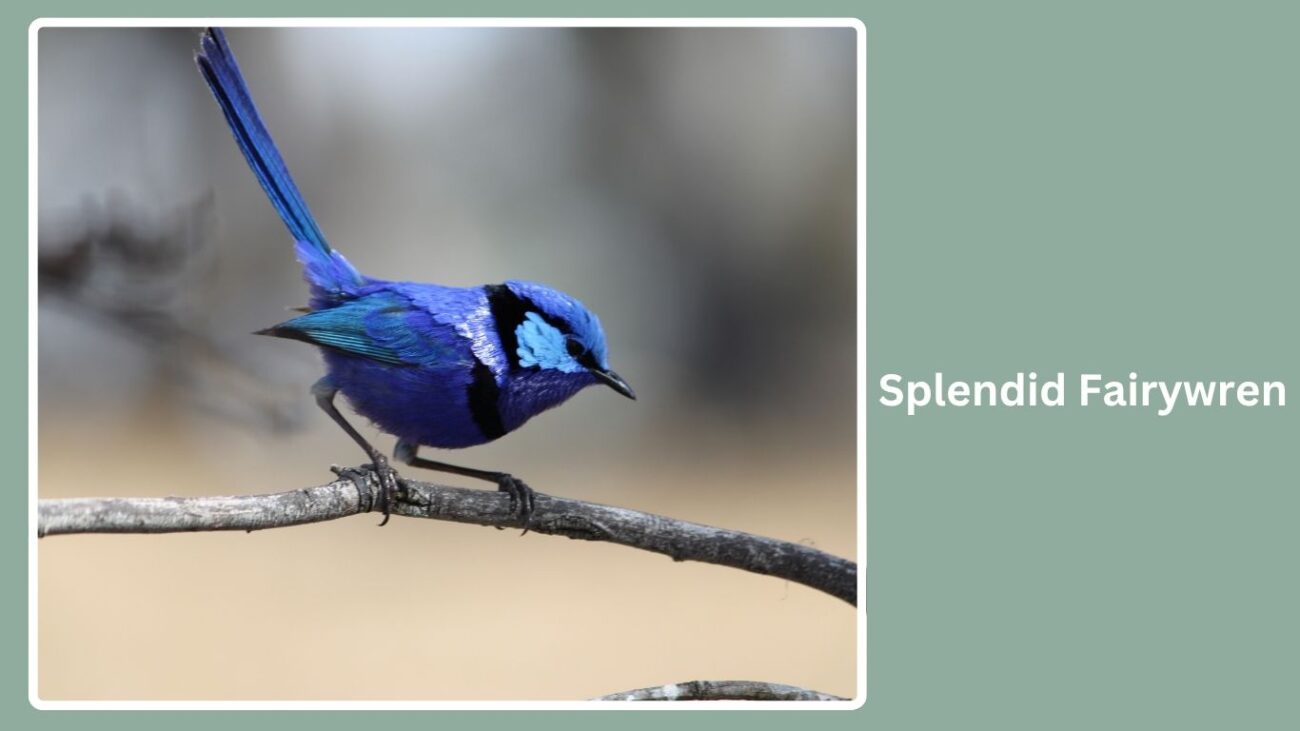
The Splendid Fairywren is one of Australia’s most brilliantly colored birds, especially during the breeding season when males display glowing blue plumage. These tiny birds are social, active, and often seen flitting through low shrubs and grasses in family groups.
Identification
- Very small songbird, about 5.5 inches long
- Breeding males: vivid electric blue all over with darker blue tail and face
- Non-breeding males and females: mostly brown with slight blue tinges
- Slender build with a long, upright tail
Color and Appearance
During the breeding season, males turn almost entirely iridescent blue—from crown to tail. The face, chest, back, and belly are different shades of shimmering blue, making them look like tiny flying sapphires. In contrast, non-breeding males and females appear brown and inconspicuous.
Habitat and Behaviors
They inhabit scrublands, open forests, and arid grasslands across much of Australia. Splendid Fairywrens are highly social and live in cooperative groups. Males often perform courtship displays involving singing and presenting colorful flower petals to females. They primarily feed on insects and are active and vocal throughout the day.
23. Blue Nuthatch
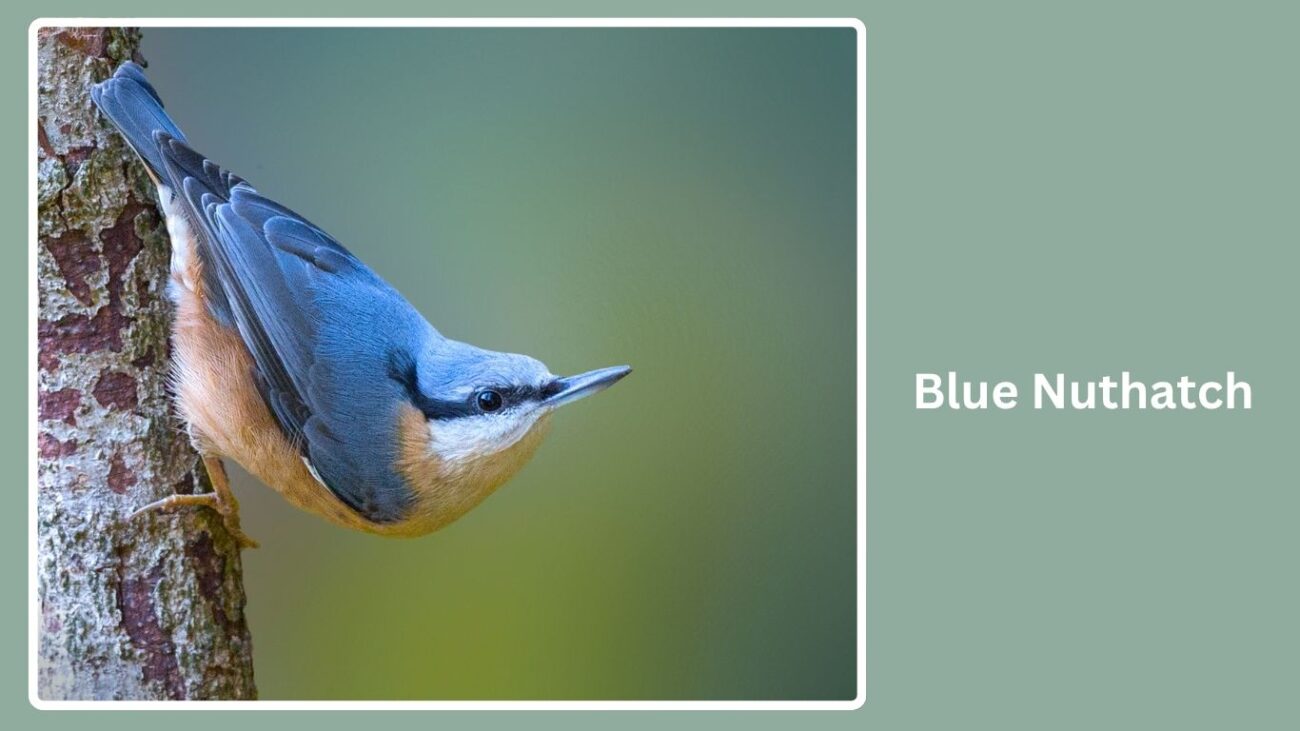
The Blue Nuthatch is a vibrant, energetic bird found in the montane forests of Southeast Asia. Unlike other nuthatches, which are usually gray or brown, this species stands out for its almost neon-blue upperparts.
Identification
- Small bird, about 5.5 to 6 inches long
- Deep blue back, wings, and head with lighter blue face and throat
- Underparts pale gray to bluish-white
- Thin, pointed bill and short tail
Color and Appearance
Blue Nuthatches display a rich cobalt blue across their upper body, including the crown, back, and wings. Their head often has a slightly lighter tone, adding contrast. The underparts are soft gray, but their brilliant top half gives them an overall blue-dominant appearance.
Habitat and Behaviors
They live in tropical and subtropical montane forests, typically at elevations above 1,000 meters. Blue Nuthatches forage actively on tree trunks and branches, often moving upside down in typical nuthatch fashion. They feed on insects and are usually found in pairs or small flocks, sometimes joining mixed-species foraging groups.
Summary:
Blue birds are found across continents and ecosystems, and each species adds a unique tone to nature’s color palette. The Indigo Bunting, Mountain Bluebird, and Hyacinth Macaw dazzle with bold blues, while birds like the Blue Dacnis and Verditer Flycatcher shimmer with tropical brilliance. Whether small like the Splendid Fairywren or large like the Blue Jay, these 23 all-blue birds remind us how vibrant and diverse the avian world truly is.

